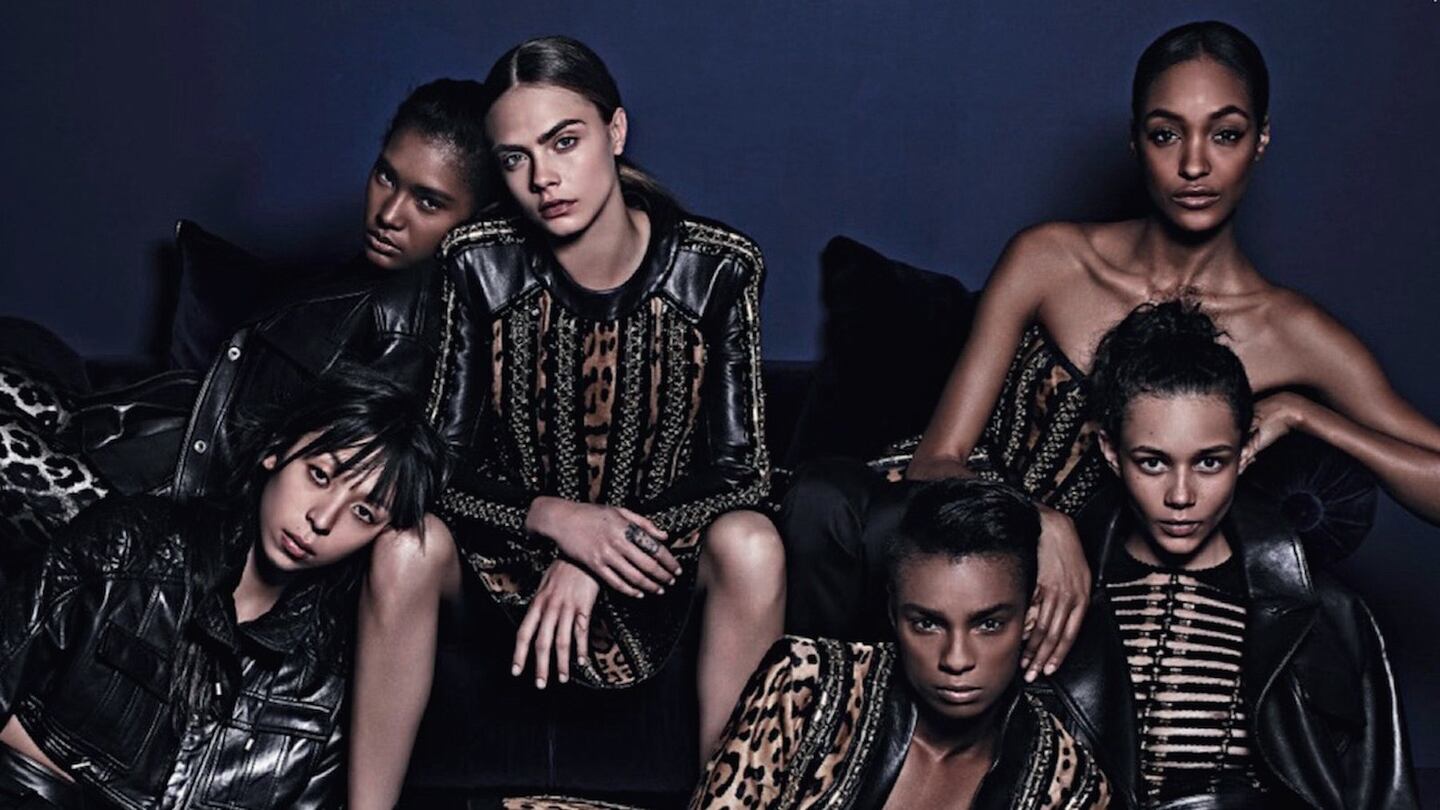
The Business of Fashion
Agenda-setting intelligence, analysis and advice for the global fashion community.

Agenda-setting intelligence, analysis and advice for the global fashion community.

TORONTO, Canada — The lack of racial diversity on fashion runways repeatedly makes headlines around the world — often overshadowing the actual shows.
Some fashion brands have attempted to address the issue by casting diverse models. While this inclusion promotes racial visibility — something seldom seen in fashion — its execution is often limited to one collection or campaign. The tactic reinforces white models as fashion’s rule, with diversity always the exception.
The fashion industry explains away the lack of diversity, using the bottom line — the “black models don’t sell covers” excuse. Fashion creatives suggest that corporate powers discourage them from hiring racially diverse models because white consumers don’t perceive them as aspirational. Although today’s fashion brands draw from a diverse global consumer base, marketers explain that non-Caucasian consumers — whether they are living in Western or non-Western countries — look up to a white ideal and want only to associate with brands that sell this image. Even for those creatives who want to cast diverse models, budgets only enable the execution of one global campaign — and white models, supposedly proven to attract consumers, reduce risk.
By justifying the lack of diversity in fashion as a supposed consumer preference, the fashion industry seems to accept that its consumer market maintains a racist belief system. But my own research into whether there is a business case to support diverse models in fashion has revealed that it is the fashion industry, not consumers, that upholds a racist belief system.
ADVERTISEMENT
In total, I surveyed and conducted focus groups with over 3,000 women. In one study, I assessed the responses of black and Caucasian women in Canada and the United States to models in fashion advertising that reflected their races. Black women were 1.5 times more likely to purchase a fashion product advertised by a black model. Caucasian women’s purchase intentions did not change regardless of whether the model in the fashion campaign was black or white.
In my focus groups, black women told me that seeing a model that mirrored their race made them feel beautiful because they rarely saw black models in fashion advertising. They subsequently felt connected to the brand and inspired to celebrate their beauty by shopping from that brand. Although they did not share the same race, Caucasian participants identified with advertising that featured black models because they believed the brand upheld the values they aspired to, such as empowerment and inclusion. Caucasian women also explained that they could imagine the advertised outfit on themselves, regardless of whether or not they shared the model’s racial background.
This study also investigated how Chinese women in China responded to fashion advertisements featuring Caucasian and Chinese models. Although the purchase intentions of most women in the Chinese sample increased when they viewed white models in fashion advertising, these findings are likely temporary. Commercial advertising was re-introduced into China only in 1979: as a result, Chinese consumers have a limited experience with advertising. They may become critical of the unrealistic appearance standard of white models once they have greater exposure to them.
In fact, a vocal group of younger Chinese women in my focus groups dismissed campaigns with white models as representing an unattainable image and instead gravitated towards Chinese models, whose image they considered more achievable. Some of these women were even hostile towards fashion brands that used Caucasian models because they believed campaigns with white models represented Western colonisation, and wanted to reclaim their own beauty.
Blaming consumers for the lack of diversity in fashion advertising is not only misguided — it misrepresents their mindsets. Not only do customers want to see diversity, they reject brands that whitewash their advertising. Instead of scapegoating the market, fashion should focus on its own belief system — a belief system that normalises a fashionable body as a uniform age, size and race.
From design to marketing, each part of the fashion industry contributes to a system that erases diversity and each of us can intervene to change it — shifting the current dialogue from critique about the lack of diversity to the creation of an industry that celebrates it. Fashion educators can teach students to think critically about barriers that prevent the selection of diverse models and inspire them to promote diversity in their work. Executives and designers can challenge their assumptions and routine decisions, and consciously cast the panorama of their market. As you consider how to make diversity fashion’s norm, know that consumers are on your side.
Dr. Ben Barry is an Assistant Professor of Equity, Diversity and Inclusion at the School of Fashion, Ryerson University in Toronto, Canada.
Often left out of the picture in a youth-obsessed industry, selling to Gen-X and Baby Boomer shoppers is more important than ever as their economic power grows.
This month, BoF Careers provides essential sector insights to help PR & communications professionals decode fashion’s creative landscape.
The brand’s scaled-back Revolve Festival points to a new direction in its signature influencer marketing approach.
Brands selling synthetic stones should make their provenance clear in marketing, according to the UK’s Advertising Standards Authority.